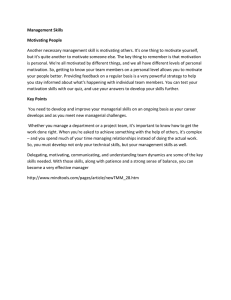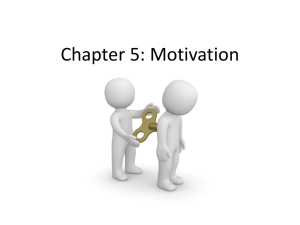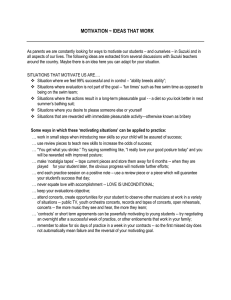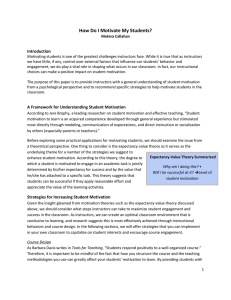Fedrick Herzberg called traditional motivational strategy, KITA
advertisement
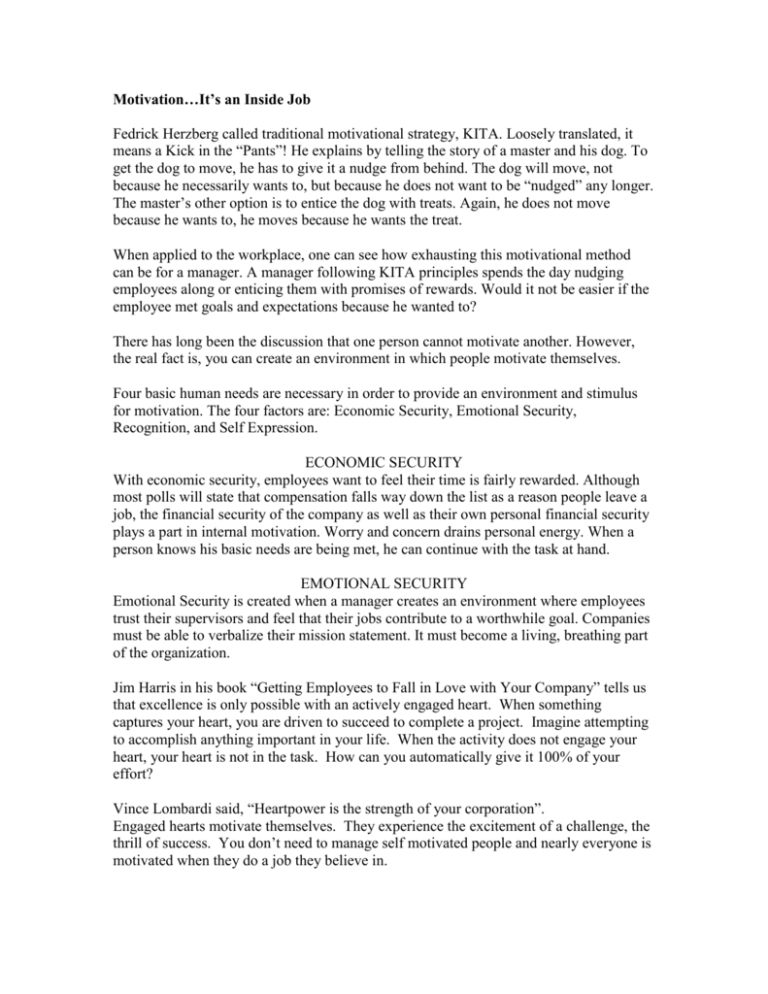
Motivation…It’s an Inside Job Fedrick Herzberg called traditional motivational strategy, KITA. Loosely translated, it means a Kick in the “Pants”! He explains by telling the story of a master and his dog. To get the dog to move, he has to give it a nudge from behind. The dog will move, not because he necessarily wants to, but because he does not want to be “nudged” any longer. The master’s other option is to entice the dog with treats. Again, he does not move because he wants to, he moves because he wants the treat. When applied to the workplace, one can see how exhausting this motivational method can be for a manager. A manager following KITA principles spends the day nudging employees along or enticing them with promises of rewards. Would it not be easier if the employee met goals and expectations because he wanted to? There has long been the discussion that one person cannot motivate another. However, the real fact is, you can create an environment in which people motivate themselves. Four basic human needs are necessary in order to provide an environment and stimulus for motivation. The four factors are: Economic Security, Emotional Security, Recognition, and Self Expression. ECONOMIC SECURITY With economic security, employees want to feel their time is fairly rewarded. Although most polls will state that compensation falls way down the list as a reason people leave a job, the financial security of the company as well as their own personal financial security plays a part in internal motivation. Worry and concern drains personal energy. When a person knows his basic needs are being met, he can continue with the task at hand. EMOTIONAL SECURITY Emotional Security is created when a manager creates an environment where employees trust their supervisors and feel that their jobs contribute to a worthwhile goal. Companies must be able to verbalize their mission statement. It must become a living, breathing part of the organization. Jim Harris in his book “Getting Employees to Fall in Love with Your Company” tells us that excellence is only possible with an actively engaged heart. When something captures your heart, you are driven to succeed to complete a project. Imagine attempting to accomplish anything important in your life. When the activity does not engage your heart, your heart is not in the task. How can you automatically give it 100% of your effort? Vince Lombardi said, “Heartpower is the strength of your corporation”. Engaged hearts motivate themselves. They experience the excitement of a challenge, the thrill of success. You don’t need to manage self motivated people and nearly everyone is motivated when they do a job they believe in. RECOGNITION Recognition is created when employees experience immediate rewards for good work in the form of appreciation verbally communicated in front of others. We need to focus on people doing their personal best. Best practices show us that to reinforce a good habit, a manager should recognize it. So to improve attendance, reward good attendance. Other ways an environment can recognize employees is through ‘spot awards’. These are for individuals who have gone above and beyond the call of duty. Spot awards can be as simple as earning an afternoon off or on the spot cash! Celebrating birthdays and anniversaries are other ways to create an environment of recognition. Fifteen minutes in the break room sharing a cake, tells someone they are appreciated. A personal thank you note sent to one’s home or a quick note of gratitude written on a paycheck stub also goes a long way. SELF EXPRESSION Everyone needs to feel a sense of self worth. By allowing your employees a way to express themselves, they feel that their suggestions, opinion, and even fears are expected and welcomed. The most motivating thing a person can do for another is to listen. By implementing regularly scheduled “One to One” meetings, an employee knows he has an opportunity to raise his own questions and issues in an uninterrupted meeting with his manager. The format is easy. Prior to the meeting, the employee submits a worksheet which ask for challenges, goals, and specific topics that employee would like to discuss during this time. This becomes the guideline for the 30 minute, uninterrupted time with the manager. This time is essential in curbing negativity and low morale. Again, it gives the employee an opportunity to express himself. When an employee comes to you with a problem or a challenge, ask the question, “What would you do if you were in my job?” By making this a habit, you may find that employees begin thinking through the solution before they approach you. Motivate Yourself! Remember, motivating employees start with motivating yourself! It’s amazing how, if you hate your job, it seems like everyone else does too! When you are stressed, everyone else is too! Enthusiasm is contagious. If you are contagious about your job, it’s much easier for other to be too! Make time to take care of yourself so that you are able to give 150% to create an environment which makes motivation from the inside possible!
